Menu
Physics Lesson 3.1.1 - Types of motion according to the moving intensity (rhythm)
Please provide a rating, it takes seconds and helps us to keep this resource free for all to use
Welcome to our Physics lesson on Types of motion according to the moving intensity (rhythm), this is the first lesson of our suite of physics lessons covering the topic of Motion. Types of Motion, you can find links to the other lessons within this tutorial and access additional physics learning resources below this lesson.
Types of motion according to the moving intensity (rhythm)
In this category there are two main sub-categories included. They are:
I. Uniform motion. It takes place when an object moves at the same velocity over time. This means it does not change its moving rhythm. Mathematically, we say an object is in uniform motion when in equal time intervals it travels the same distance. Look at the figure below: 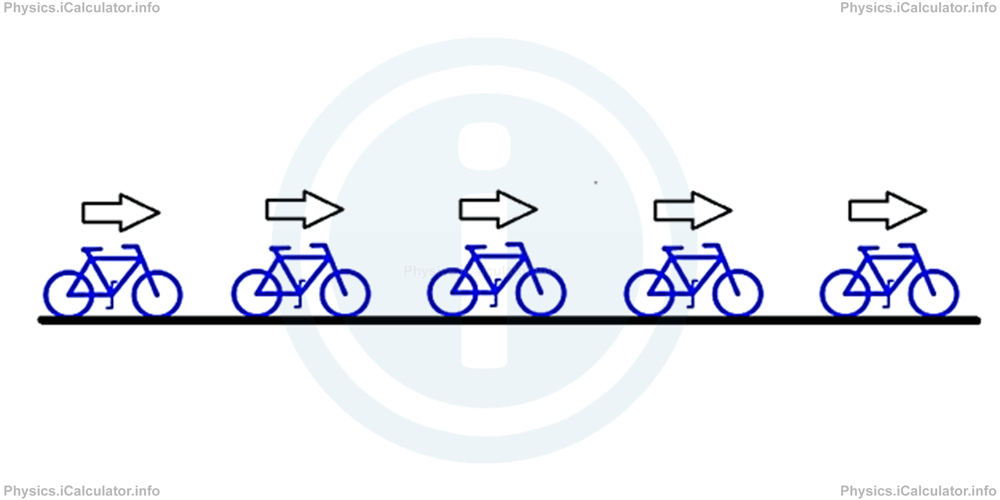
II. Non-uniform motion. This sub-category is further divided into Accelerating (Speeding up) and Decelerating (Slowing down) motion. Accelerating motion occurs when an object increases its velocity over time and Decelerating motion occurs when it decreases the velocity over time.
On the other hand, if the acceleration (or deceleration) is uniform, the object accelerates (decelerates) at the same rate. This kind of motion belongs to the uniformly accelerated (decelerated) motion. If the acceleration (deceleration) is not uniform, this is considered as a non-uniformly accelerated (decelerated) motion.
Look at the figures below for more insight in this concept.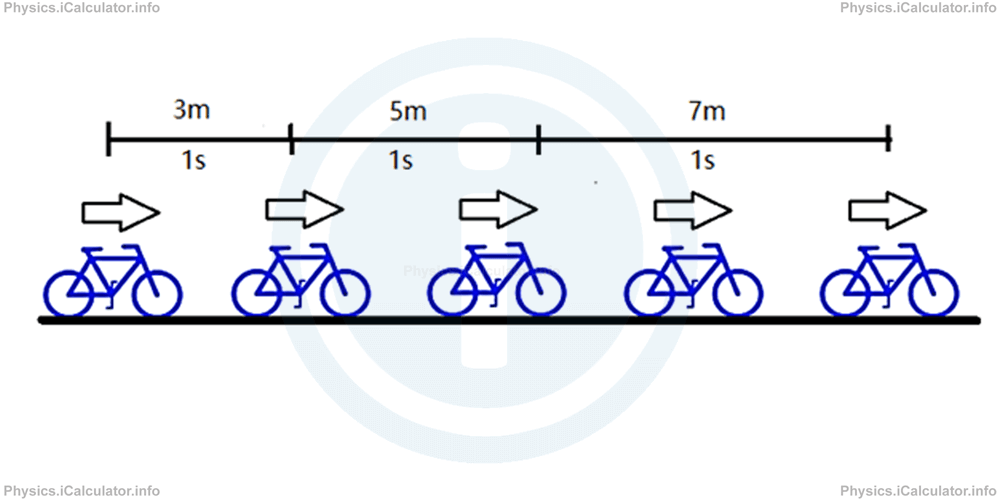
This figure represents a uniformly accelerated motion as the velocity increases by the same rate (in the next second the object travels 2m more distance than in the previous second). If the bicycle doesn't change its moving rhythm, we can find what distance will it travel after a certain time. That's why it is a uniformly accelerated motion.
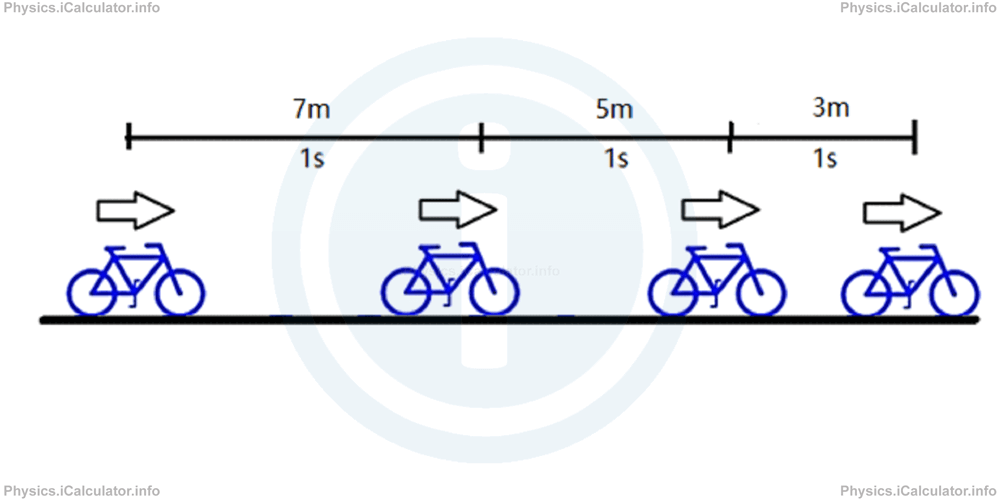
In this figure, we have a uniformly decelerated motion as the bicycle slows down at the same rate (2 m/s for each second).
In the next figure, you see that the speeding up process is not regular. You are not able to find the velocity after a given time from the data shown. Thus, although it is obvious this motion is accelerated, it is not uniformly accelerated one, as its velocity does not increase by the same rate.
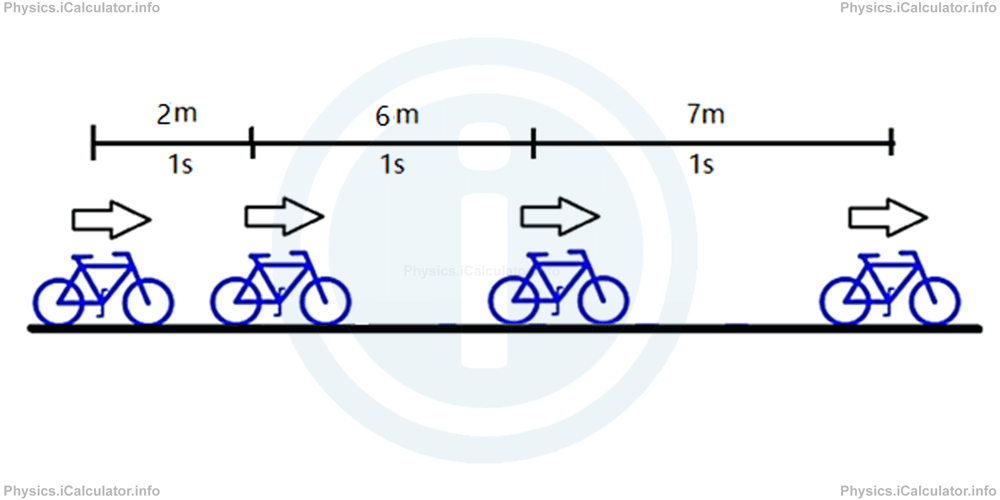
On the other hand, the figure below shows a non-uniformly decelerated motion as the slowing down process does not occur at a regular rate. You cannot foresee what velocity the object will have after a certain period, based on the data provided.
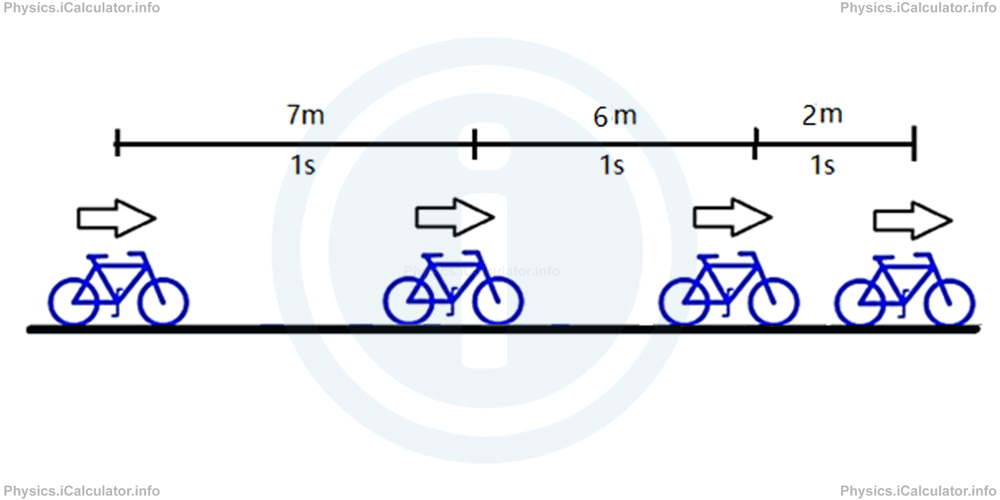
If the motion is irregular, we can split in into small regular sections and making a separate study for each of them.
The scheme below shows how various types of motion based on the moving rhythm are related to each other.
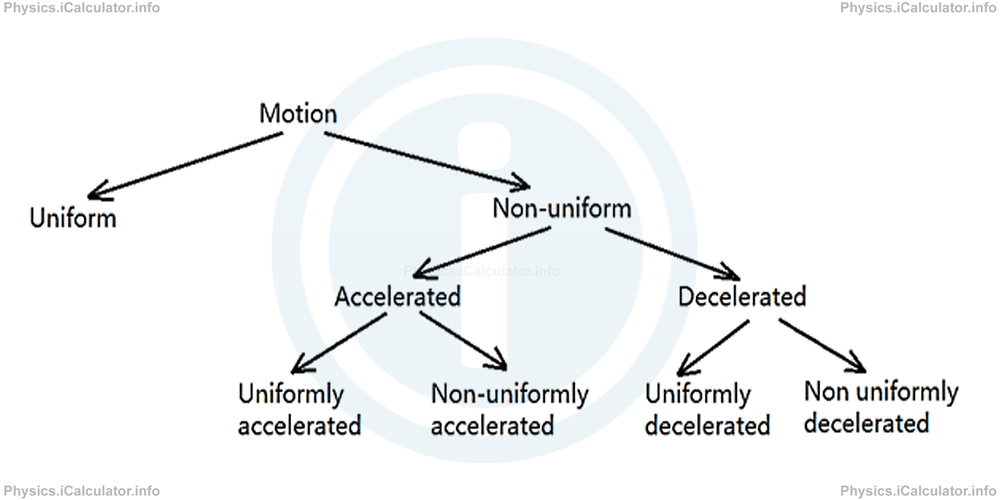
You have reach the end of Physics lesson 3.1.1 Types of motion according to the moving intensity (rhythm). There are 2 lessons in this physics tutorial covering Motion. Types of Motion, you can access all the lessons from this tutorial below.
More Motion. Types of Motion Lessons and Learning Resources
Whats next?
Enjoy the "Types of motion according to the moving intensity (rhythm)" physics lesson? People who liked the "Motion. Types of Motion lesson found the following resources useful:
- Rhythm Feedback. Helps other - Leave a rating for this rhythm (see below)
- Kinematics Physics tutorial: Motion. Types of Motion. Read the Motion. Types of Motion physics tutorial and build your physics knowledge of Kinematics
- Kinematics Revision Notes: Motion. Types of Motion. Print the notes so you can revise the key points covered in the physics tutorial for Motion. Types of Motion
- Kinematics Practice Questions: Motion. Types of Motion. Test and improve your knowledge of Motion. Types of Motion with example questins and answers
- Check your calculations for Kinematics questions with our excellent Kinematics calculators which contain full equations and calculations clearly displayed line by line. See the Kinematics Calculators by iCalculator™ below.
- Continuing learning kinematics - read our next physics tutorial: Position, Reference Point
Help others Learning Physics just like you
Please provide a rating, it takes seconds and helps us to keep this resource free for all to use
We hope you found this Physics lesson "Motion. Types of Motion" useful. If you did it would be great if you could spare the time to rate this physics lesson (simply click on the number of stars that match your assessment of this physics learning aide) and/or share on social media, this helps us identify popular tutorials and calculators and expand our free learning resources to support our users around the world have free access to expand their knowledge of physics and other disciplines.